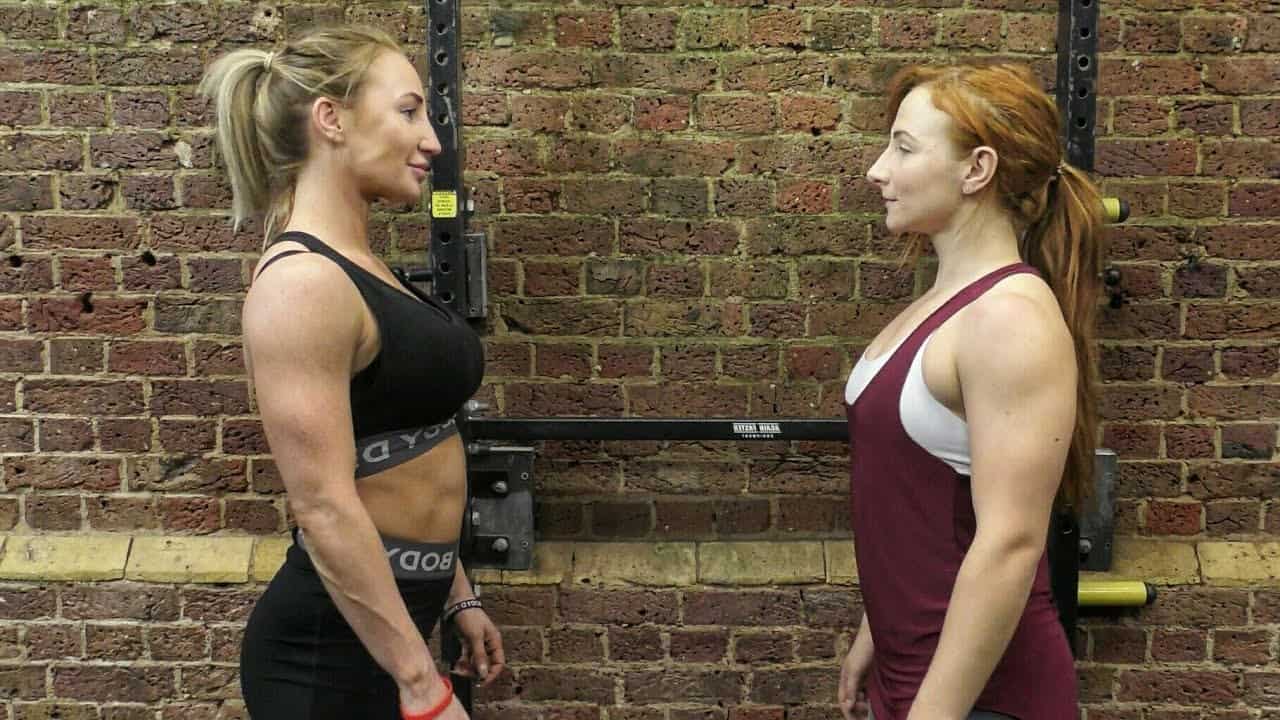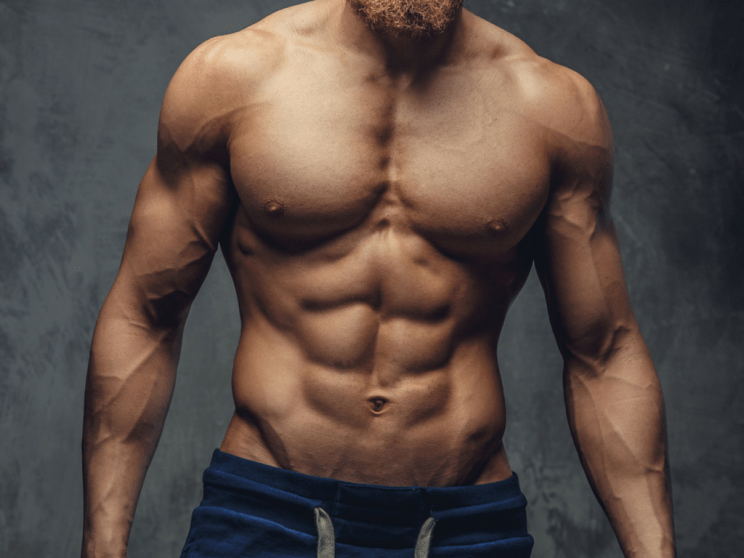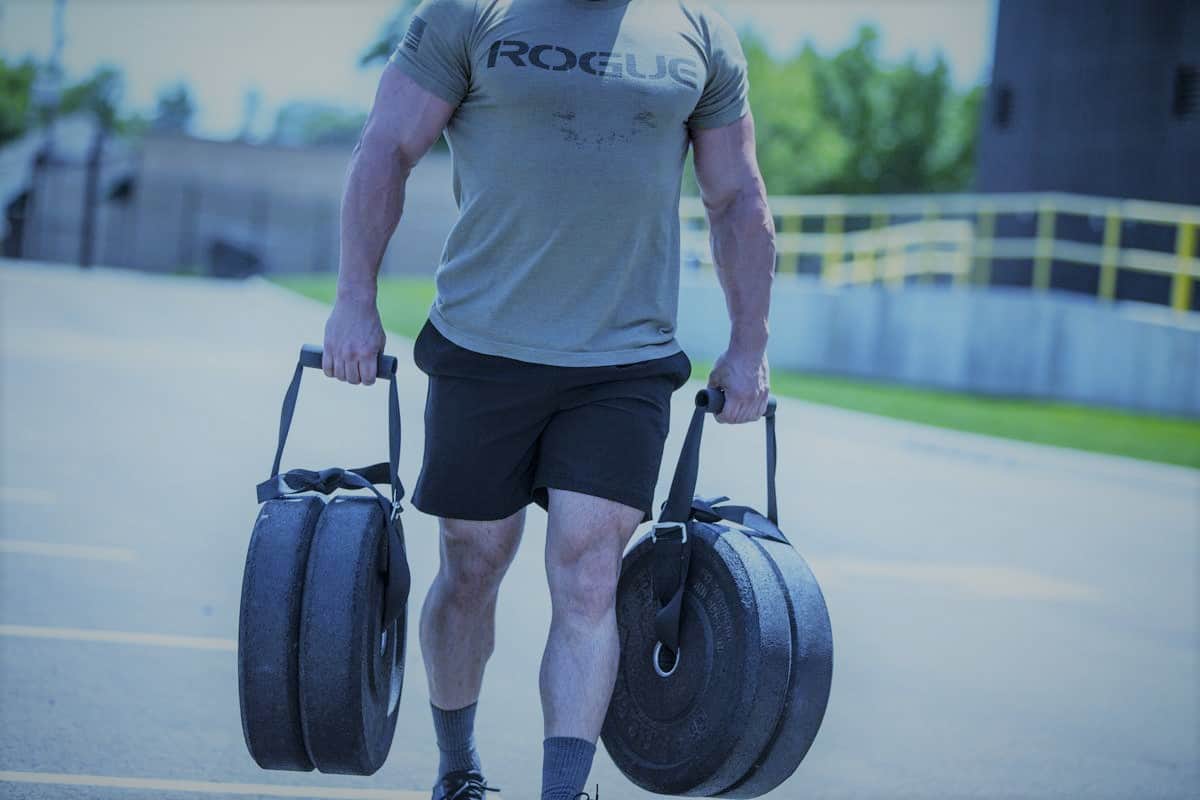It’s an age-old question that many beginners ask themselves – if part of getting stronger is having bigger muscles, why is it that powerlifters are stronger than bodybuilders while usually being less muscular? Is it the drugs they take? Are bodybuilders really just bloated up? Are powerlifters even big? And are bodybuilders even strong?
Bodybuilders are stronger than most laymen onlookers seem to think, and powerlifters are more muscular than most (who usually see clips of super heavy weights break world records) seem to realize. There are jacked powerlifters who compete at the highest level with relatively low body fat (guys like Larry Wheels, Eric Lilliebridge, and Konstantin Konstantinovs are clearly extremely muscular), but powerlifters generally aren’t ever as huge or evenly-developed as guys like Dorian Yates, Jay Cutler, and Ronnie Coleman. Furthermore, while guys like Ronnie are very strong, most elite IFBB pros aren’t putting up the same numbers as guys in their weight class over at the USPA.
Sport-Specific Training
The way the human body generally works is that you need to consistently do something for the body to decide it’s worth investing in it. That’s the reason we “lose it” if we don’t “use it”, even if we don’t regress all the way to the level of a complete beginner. Whether it’s something mental like speed chess or solving Rubik’s cubes in under a minute or something physical like running a four-minute mile or squatting 500 pounds, we need to beat our desire to achieve something into our bodies before our bodies relent and give us the physiological or mental changes we crave.
Our synapses and our muscles adapt to
stimulus in order to achieve greater efficiency, as long as we continue to make
it clear that this efficiency is desired and needed. Once we stop doing
something, our bodies stop investing in it. And when it comes to physiology,
strength and hypertrophy are two separate albeit not entirely exclusive goals.
Powerlifters are Stronger, Bodybuilders are Bigger
It’s not very hard to prove this. The rules of powerlifting are simple: lift the most weight within the limitations provided by the federation you are competing in, within nine total attempts (three per lift). The rules of bodybuilding are a little more complex because the result is often subjective. Judges make the verdict of who is the best bodybuilder based on details such as muscle symmetry, definition, fullness, posing, and stage presence.
But one thing that can be easily proven is that bodybuilders are obviously bigger, while powerlifters are obviously stronger (in general). Specificity has a lot to do with it (powerlifters train the big three, so they’re better at the big three), but a strength athlete will generally be able to output more force than a bodybuilder.
Why? Training specificity is one reason,
but there are actually a number of factors that set powerlifters apart from
bodybuilders.
It’s Not the Drugs
Powerlifting is a sport notorious for anabolic steroids. While strict drug testing in federations like the IPF and those affiliated with the IPF, alongside lifetime bans for individuals and teams that are found to be using have greatly changed the game, there are still many other federations that turn a blind eye or don’t care about steroid use, and many would argue that elite lifters even in tested federations like the IPF are still using, albeit carefully and smartly (the same thing goes on at the Olympics). In a sport where guys and gals have been working their butts off for decades to set and break world records, every single potential advantage is taken.
Bodybuilding, aside from natural bodybuilding
federations, is also a sport often defined by steroid use. Layperson onlookers
and seasoned pros alike understand that the muscle monsters we see on stage
today simply aren’t physiologically possible without the use of drugs, even
with freak genetics. Again, bodybuilders will take anything they can to overcome
the competition, so long as the side effects don’t overshadow the benefits
(think bubble guts and uncontrollable acne).
Sure, bodybuilders and powerlifters
probably take different things at different doses, and there will be a great
degree of variation between individuals, but you can’t explain away the
difference in size and strength between the two types of athletes on the basis
of steroid use (and other substances, like HGH).
Training Styles Matter
It’s more likely that the differences we
see are a matter of training style, and that the muscles in the human body
react differently to different kinds of stimulus. Powerlifters are stronger than
bodybuilders because they are conditioning their bodies to efficiently lift the
most weight possible within the most advantageous position in order to satisfy
the rules of the competition.
That means taking advantage of grips, stances, and leverages to minimize the range of motion, perfect the bar path, and limit time under tension. Powerlifters train at higher intensities (with weights closer to their true one-repetition-maximum) in order to prepare themselves to push towards a new limit.
A bodybuilder understands that the muscle
grows under stress, and chooses exercises to increase time under tension, optimally-contract
muscles along their pennation angle, and isolate muscles (as best they can) in
order to induce symmetrical hypertrophy throughout an entire body part. Bodybuilders
also more frequently utilize methods to introduce a better “pump”, sacrificing
intensity for greater volume, and more overall quality sets.
How does this affect strength and hypertrophy? And do rep ranges and intensity matter? The science seems to suggest that intensity and volume actually matter relatively little. We know that training within a low rep range (1-5 repetitions) and higher intensities introduce more strength gains, which is why powerlifters are stronger than bodybuilders. And we know that muscular endurance (the number of reps you can perform at any given percentage of your one-rep max) increases at higher rep ranges (15+). But existing data suggest that muscle growth occurs almost everywhere within the 1-15 rep range, and rep ranges themselves matter very little overall.
So why are bodybuilders bigger, but generally weaker? By taking the focus off of chasing strength gains (where trainees must pursue sessions with higher intensity training and a greater risk of injury or accumulative stress), bodybuilders can focus on getting more quality work in while prioritizing techniques that maximize stress on the muscle without “burning out” on compound lifts that just take a greater mental chunk out of a lifter.
It’s easier to train within 2-3 reps of failure on a lighter weight (60% of 1RM) on squats, and then move onto the machines and get a lot of quality work in than to go through five or six hard sets and feel burnt out and struggle on the accessories. In other words, their muscles and neurons aren’t well-adapted for force output, but they are generally larger. Then there’s also the question of sarcoplasmic growth, which may potentially be greater in training programs that prioritize a training style with higher metabolic stress (i.e. more reps and time under tension).
Bodybuilders trade putting in a greater effort to gain more strength within a specific movement for more quality work in a variety of movements in order to maximize not only general hypertrophy but muscle symmetry. Powerlifters are stronger than bodybuilders, but their muscles don’t need to grow due to experiencing relatively less mechanical and metabolic stress.
Why “Powerbuilding” is Important
While bodybuilders are focused on size and
powerlifters are focused on strength, I’d warrant that most beginner powerlifters
would do well to try and strike a balance that lets them continue to make
weekly or monthly strength gains while taking the time to introduce as many
quality sets of hypertrophic work per muscle group as possible. Many coaches
take an approach in programming that periodizes hypertrophic and strength work,
with a period that focuses on the former, and a period (typically closer to a
meet or mock meet) that focuses on the latter.
The idea here is that trainees take the time to build more muscle, and then train that muscle to become more efficient in lifting. The trade-off is that the time spent training mostly for hypertrophy will not induce as many strength gains, and the time spent training for strength will cause the muscles to grow slower, with the hope that, after a 12-month period, the trainee will have both more muscle and more strength than if they solely focused on strength (whether or not this is true is very difficult to ascertain, and the origin of many an argument on programming).
I’d personally argue that trainees that are not within their optimal range of muscularity (i.e. they’re not as big as they could be, based on their frame) would benefit from continuing to train to get better at the big three while including more hypertrophy work in their training (isolation exercises, a few select sets to mechanical failure, chasing the “pump”). After a certain point, we also know that training styles begin to cause diminishing returns, so rather than always training within the same rep range with the same exercises, varying it up with something like a daily undulating periodization and macrocycles divided into different mesocycles with different goals will lead to overall greater strength development.
This article isn’t about sports periodization, but I had to touch on it to make it clear that powerlifters often still train to get bigger, even if it isn’t directly relevant to their total (it’s indirectly relevant because bigger muscles can be trained to output more force).
Do You Want to be Bigger or Stronger?
Ultimately, all this is relevant to you if you aren’t sure whether you want bigger muscles or a bigger total. Powerlifters are stronger than bodybuilders, but as a general rule, they will be smaller. You can have both, but you need to make a choice eventually because while the two are related, they are still different things – to train for strength, you need to accept a greater risk of injury and tax your nerves more than you otherwise would, sacrificing the means to get quality work in for muscle growth after a hard intensity and peaking cycle.
On the other hand, if you want to keep
getting bigger, you can’t go and waste your energy chasing a new 1RM when it could
cost you the energy needed for a session spent accumulating more training
stimulus for a bigger muscle. The constant tug of war between size and strength
is an important part of managing one’s training as a powerlifter. And though we
may never be as big as our stage-ready brethren, at the end of the day we’re all
good friends and fellow athletes.
Want to lift heavier and avoid injuries? 💪🔥
Download our FREE '5-Minute Warm-Up Routine for Maximum Lifting Performance' and get primed for every workout!
Click below to grab your copy now!👇
👉 Download the Free Guide




